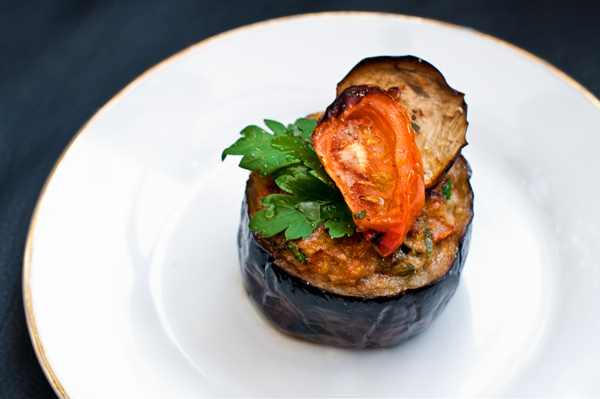After an early outing this morning running errands I found myself in a supermarket across town. Because it was so ridiculously early (and the weekend no less), there were very few customers about. An enjoyable change to the way a gazillion shoppers normally clog up the aisles like saturated fats in narrowing arteries. I think it was the emptiness and better replenished shelves of the orange liveried grocery shop that led me to finding more interesting cuts of meat.
And so on to today’s topic: What can one do with a pound and a half of oxtail.
Larousse has two paragraphs on Oxtail. We’re talking slow cooking, probably some braising and either a soup or stew-style finish. What else? After further cross referencing with my favourite old recipe book French Cooking for the Home and some other tomes, we learn that this culinary experiment is probable going to take two days – with around four hours of cooking to begin with and a cooling period in order to skim off excess fat as Louis Diat explains that, ‘An oxtail ragout that has not been thoroughly skimmed is apt to be over rich in fat and too heavy for some digestions’. Old school for ‘a bit greasy’ – and judging by the fat on the oxtail I’ve just purchased, he’s probably right. So much for my earlier saturated fat comment.
The French and Flemish seem to have the upper hand on oxtail recipes. Even the apparently English oxtail soup was reported to have been introduced to this soil by refugees fleeing the French revolution. The Flemish have hochepot which, among other things, includes boiling down pigs trotters, ears and cabbage.
However I think, for my first foray I think I will go with Oxtail Parisienne.

700g of oxtail, chopped in pieces at the joints
salt
pepper
oil to braise in
3 carrots
6 small onions (or shallots)
1 1/2 tbsp flour
1 clove garlic
fresh parsley,
celery,
a bay leaf,
thyme (dried or fresh),
sherry (or white wine)
a tin of tomatoes
a handful mushrooms
three medium potatoes
(will serve 2-3)
Season the oxtail with salt and pepper, and brown in a large pan with some oil. Then brown off the onions and carrots in the same pan also. Drain out the excess fat, add the garlic and flour and turn everything gently to allow good coverage.
Tie the celery, bay leaf, sprigs of thyme and parsley stalks together with string (leave some parsley spare for garnish later) and drop into the pan with the wine and tomatoes. Add enough water to cover the meat, bring to the boil and then reduce heat, cover and cook slowly for 4 hours. You could transfer it to a slow cooker crock pot at this point if you wanted.
After 4 hours cooking, allow to cool until the fat that has collected on the surface is easy to skim off the top. Take care not to bully the mix around, the meat will be on the tender side. This is the point at which it can become a two day process; if you decide to leave the stew to cool over night and reheat it the next day. Allowing the stew to rest for a day also lets the flavours settle and come together for a fuller flavour.
While the stew is warming through again, sauté the mushrooms and add to the ragout. Cook for another half an hour.
Add diced boiled potatoes to the stew at the last minute, season with chopped parsley and serve. ~
If you’re one of those people that thinks stew ‘makes everything on the plate taste the same because it’s all cooked together’. This is for you. Omit the potatoes and cook them separately. Roast them, perhaps with some courgettes, or perhaps even make rostis:

Credit for this part of the article must got to @olliehunter.
Use a ratio 1 large potato to 1 small onion
Egg to bind.
Grate 2 large potatoes and 2 onions into a bowl lined with a clean teacloth. Gather the teacloth edges and draw tightly together, squeezing excess juice out of the grated bulk. Empty into the bowl and mix in an egg. Season with salt and pepper (side note: chilli flakes, garlic, parmesan or cheddar are great additions at this point – but it depends what you are serving the rosti with). Spoon the mixture into a small hot oiled frying pan and press down to fill to the edges. Don’t make it too thick because the potato has to cook through. Allow to brown and go crisp on one side for 7 minutes on a medium to low heat (depending on thickness), before turning out onto a plate (a palette knife can be helpful) and sliding back into the pan on the opposite side. Repeat the cooking process for this side. Make sure that the potato is soft before before serving.




